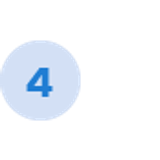Design plan
Option 4:
Learn about a group or community
Time frame: 12 – 24 weeks
Budget: $200,000 – $250,000
How do I do this?

Desktop research or landscape review
Method
To ensure prior internal and external research is incorporated into research design and planning.
Expert interviews or stakeholder workshop(s)
Method
To identify internal understandings of challenges and opportunities. Multiple workshops should be scoped, depending on the complexity of the stakeholder group.
Survey or opportunity sizing
Method
To gain quantitative data around a community or population’s needs and behaviours. This may be done after ethnographic research in order to size pain points or opportunities identified through that phase.
Ethnographic research (x 40 participants)
Method
To focus on understanding how people behave and what they use, in order to identify opportunities for improvement.
Research synthesis
Method
Ensuring that stakeholder questions are answered, that insights are documented in a robust and reusable way and that actionable recommendations for the product or service are arrived at.
What will I get?

Insights report
Output
The output from user research, containing insights, stories, opportunities or recommendations backed up by evidence.
Current state journey map
Output
A tool used to visualise the user experience. It shows where and when a person or group interacts with existing services and products and what the experience is like for them.
Personas
Output
A made up person (archetype), based on user research, that represents a group of people who use a site, service or product in a similar way or who have similar user needs.
Quantitative insights
Output
Research with large or many datasets that describe ‘what’ happens rather than ‘why’ it happens.
Pros
Cons
|
Updated
